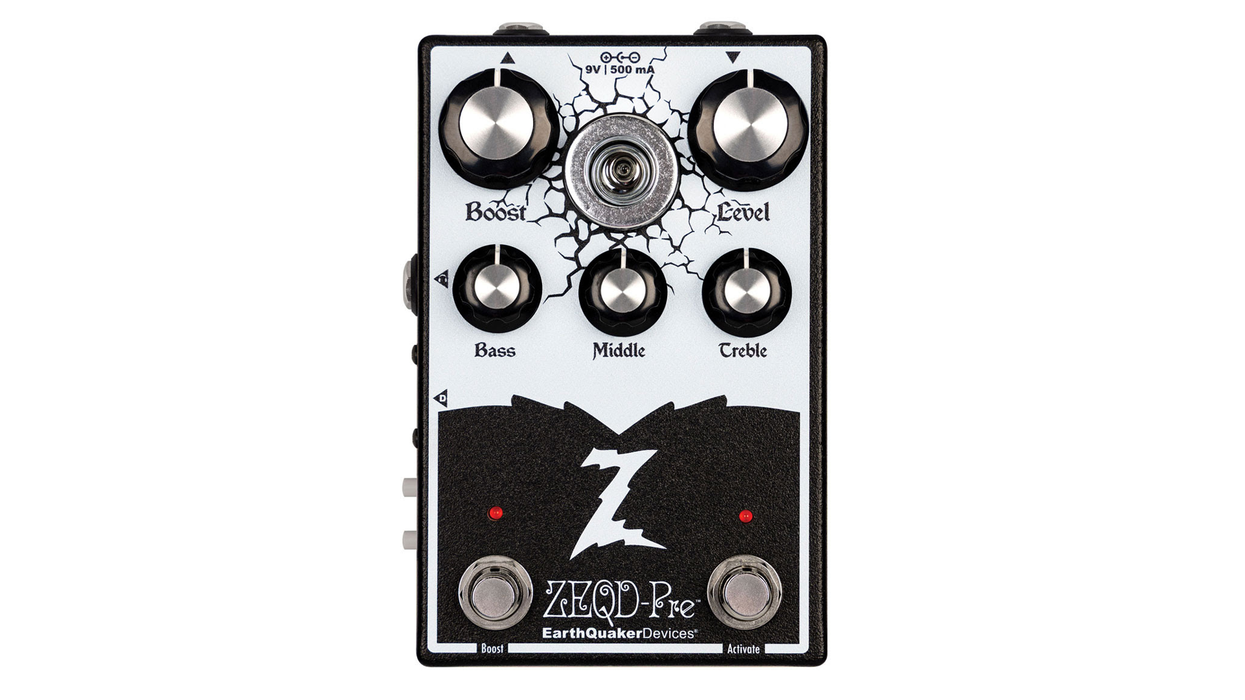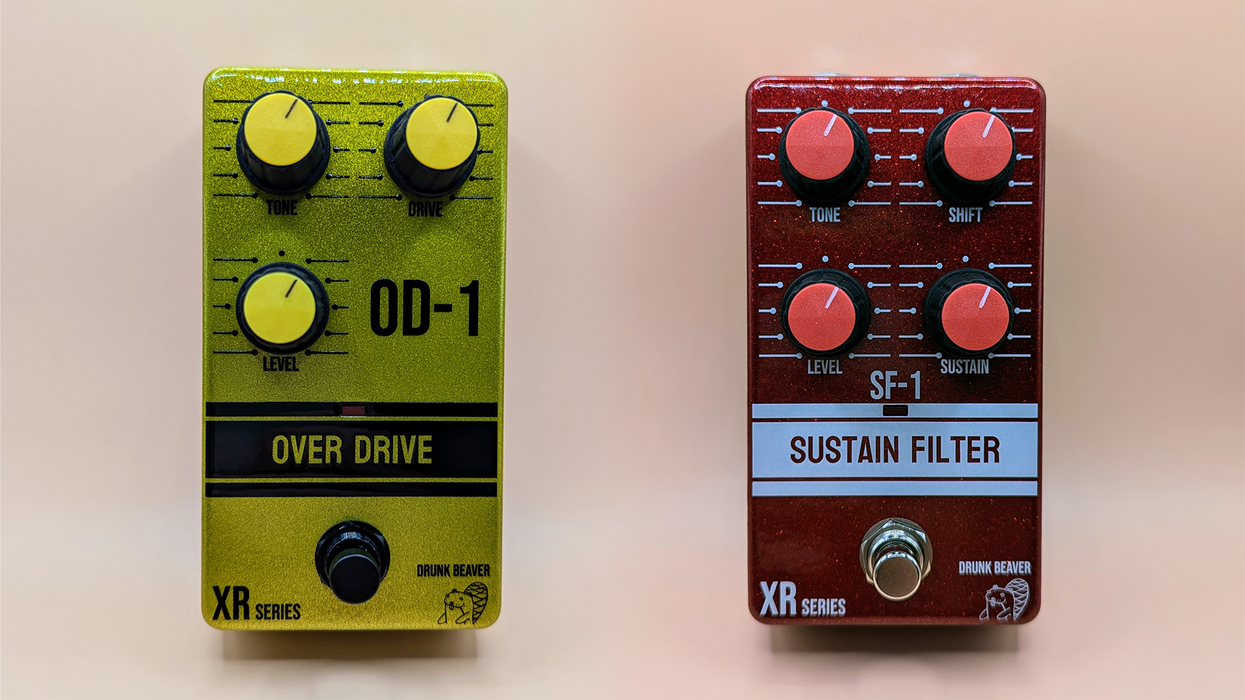Recorded with Squire Contemporary Jazz direct into Focusrite Saffire 6 interface into MacBook Pro using Logic.
Clip 1 - Neck pickup soloed, tone at 100 percent, picked riff. Level at 3 o'clock, drive at noon, mix at noon, mids at 2 o'clock, low pass at 3 o'clock, and high pass at 4 o'clock.
Clip 2 - Both pickups with tone at 100 percent. Level at 2 o'clock, drive at 10 o'clock, mix at 1 o'clock, mids at 2 o'clock, low pass at 1 o'clock, and high pass at 9 o'clock.
RatingsPros:Highly tweakable modern distortion. Flexible options. Cons: Streamlined control set can require more time to dial-in the desired sound. Street: $199 Blackbird Savoy darkglass.com | Tones: Ease of Use: Build/Design: Value: |
Darkglass Electronics has risen to become a respected torchbearer for highly tweakable bass tone over the last 10 years. One of the areas in which the company has gotten a lot of traction is with bassists seeking modern tones, particularly within contexts where their guitar-playing counterparts are expanding their musical footprint with 7- and 8-string guitars that command wider frequency needs. With both its line of amps and effects, the Finnish company has made it its mission to help preserve a place for bassists within dense sonic landscapes. Here, we look at the Microtubes X overdrive/distortion pedal, which streamlines many features found in the company’s Microtubes X7 into a smaller footprint.
Minus 7
What makes Darkglass’ X-series pedals so unique is that they enable you to carefully adjust the range of distorted frequencies, as well as filter the spectrum of low-end content to the effected signal. For example, a quick twist of the high-pass frequency knobs found on X-series devices can transform the tone from burly buzz to edgy grind. You can also adjust the heft of the distorted signal with the low-pass, creating a scooped roar or a more classic, mid-forward fuzz.
Naturally, Darkglass had to make some accommodations to fit the X7’s features into the X’s smaller dimensions. Instead of separate volume controls for the high- and low-pass signals, the X has a mix function and level dial. Meanwhile, the X7’s EQ and shelving sliders are replaced on the X by a mid control that lets you add or subtract 12 dB at 500 Hz. Low-frequency compression is not part of the package with the X, but it’s also $100 less than its big brother.
Heard It on the X
Having played the Darkglass X7 a bit in the past, I looked forward to checking out the X, and did so with a Fender Elite PJ and a Bergantino rig comprised of a forte HP head and HG410 cab. My first impression was that the X’s light, compact design was both rugged and practical. It would be natural to assume that fewer features would make it easier to use, but I initially found that the X required more tweaking than expected. That said, the mix control was handy for balancing the low- and high-pass signals, whereas these sections are managed separately on the X7.
When you want it, Darkglass’ signature brutality is definitely there for the taking in the X. Positioning high-pass around 10 o’clock and cranking low-pass was a great starting point from which to use the drive control to season with the right amount of angst. As I found while using the X on a rock tribute gig, a slight boost of the mids gave presence to my picked bass lines, while a turn to the left conveyed a more hollow, grinding timbre. But that’s just the beginning, as adventurous players will find that X’s controls can concoct a wide array of overdrive and distortion tones, all while using the filters to voice a sound that maintains a supportive low end. Temper the highs and it’ll do everything from ’70s rock to doom-y sludge, or dial back the low-pass and attenuate the highs for a more metallic, modern prog tone.
The Verdict
The Darkglass Microtubes X rewards bassists with a spectrum of distorted possibilities. While it at first felt a little less intuitive than its big brother, with a little extra time you can garner similar results. In addition to big tone, its smaller package rewards you with a little extra space on your pedalboard. If you seek a sleek, sturdy pedal that provides a box full of aggressive tones, the Microtubes X might mark your spot.







![Rig Rundown: John 5 [2026]](https://www.premierguitar.com/media-library/youtube.jpg?id=62681883&width=1245&height=700&quality=70&coordinates=0%2C45%2C0%2C45)
![Rig Rundown: AFI [2025]](https://www.premierguitar.com/media-library/youtube.jpg?id=62064741&width=1245&height=700&quality=70&coordinates=0%2C0%2C0%2C0)












 Shop Scott's Rig
Shop Scott's Rig















































